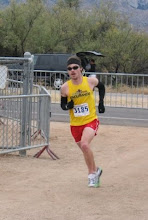A letter sent to the Center for Biological Diversity.
To whom it may concern,
My name is Matt Boness. I appreciate the work you do to save our environment, and just like you, I agree to the final line of your mission statement, "We want those who come after us to inherit a world where the wild is still alive." As an avid mountain biker, hiker, trail runner and all around outdoor enthusiast, I can appreciate the outdoors for their pure beauty. But, I write this letter to let you know that you screwed up. I am sure you have gotten plenty of emails from other concerned Flagstaff, AZ residents after the local Daily Sun newspaper ran an article on why the Schultz Pass area was not thinned. My father is a 30 year forester and was called in to help battle the 15,000 acre blaze. It closed trails, torched thousands of acres of trees and currently has left the forest uninhabitable for animals. It also says within your misson statement that you use "science, law, and creative media" to protect "the lands, waters, and climate that species need to survive." I don't know what kind of science you were using to halt the projected thinning of this forest in 2007, as the Daily Sun has made their readers aware. Having researched the slow decline of the health of our forests in the West, I can tell you that thinning is only recreating the natural, traditional forest landscape that was abundant 100 years ago. By removing certain trees and reintroducing cool, ground fires to the area, as was the traditional role of fire, the habitat becomes healthier and more nutrient rich, which allows for more diverse growth and a more overall healthy forest.
I was also impacted by the Hardy fire that plagued my great town the day before the Schultz fire started. My household was put on standby for evacuation as smoke billowed over our house. Two weeks have passed since containment of the blaze and I have taken my morning jogs through the burned areas. With no formal training, but with years of experience gained from a father who is one of the great foresters in Arizona, I can tell you that without thinning in the Hardy burn area, houses would have been lost. The fire burned hot through the canopies of the trees and it does not take a trained eye to see that, where there was no thinning, the trees have become blackened matchsticks. But, where the thinning projects had occured, the fire still killed plenty of trees, but the canopies are still intact. When a fire burns that hot, on a windy day much like the one when it started, embers can fly up to a mile ahead of the fire and create new spot fires. I say, with little doubt, that had the forest not been thinned in that area, the fire would have continued trudging through the forest and could have potentially burned the houses of those who had been evacuated. This scenario is all hypothetical of course, but any educated person can see the difference in the fire behavior between a thinned and non-thinned forest.
With proper forest management, the devastation of the Schultz fire could have been largely mitigated. As your mission statement makes clear, you want to "protect the lands, waters and climate that species need to survive." But, I think it is obvious that you did nothing to protect the lands that are now torched and burned. The beauty of the area is lost for decades, perhaps longer. The once abundant shade of our poderosa pines is now gone. The grasses, shrubs and soil grabbing vegetation that stopped devastating erosion from wiping away our mountainside is now gone. Monsoons are lurking and the people of the evacuated neighborhoods are now facing landslides and mud flows instead of flame. This fire was incredibly close to burning through the Flagstaff watershed on the San Francisco Peaks. Which could have largely ruined the water resources that our town desperately needs to survive. All the sediment washed away from the looming rains will now wash into the streams that once flowed clear and filled resevoirs for animals to drink. The sediment, boulders, and downed debris has potential to clog normal flows and flood areas that are not used to the large increase of water. You are batting "oh for two" right now on maintaing your mission statement. Climate. I think it is no surprise that with trees, grass, and vegetation gone, the animals cannot inhabit the forest. The large amounts of CO2 that the smoke released is clearly not helpful in battling climate change. The trees lost cannot produce life saving oxygen anymore. The whole climate is different now. Not to mention, those who responsibly access the forest, the bikers, hikers, bird watchers, campers and sight seers, are banned from the forest they love. Many may not return to face the devastation that took the beauty out of their respite in the woods.
The choice was to cut a small percentage of trees. We lost almost all of them. By stopping the thinning of our forests, we face catastrophe that your center doesn't have to face. We have to look at the scarred and charred forest every day. We have to rehab the forest. And in a worse case scenario, homes could have been lost. Thankfully none were, because you would be facing an even larger backlash. Please, use science, law and creative media to make the right decisions.
Sincerely,
Matt Boness
The Great Tretter Conspiracy......
8 years ago



No comments:
Post a Comment